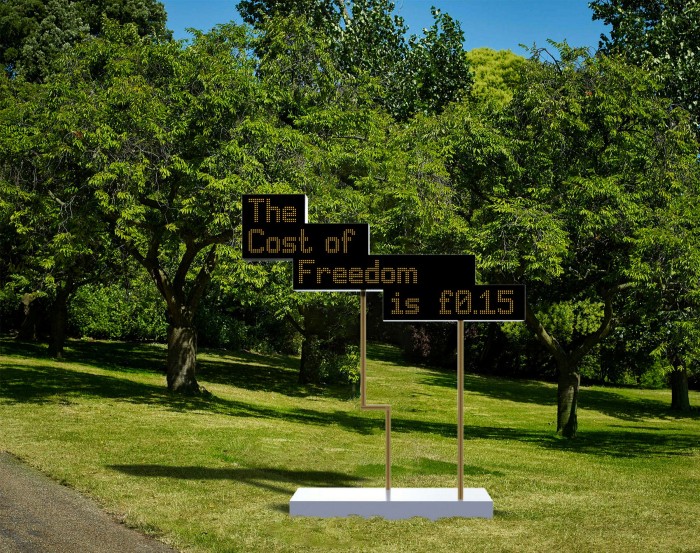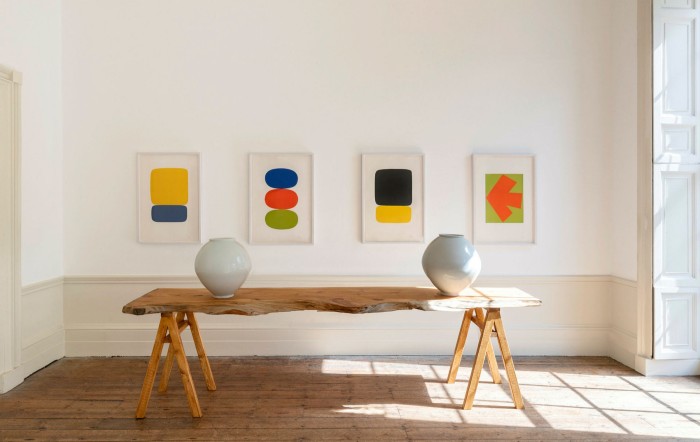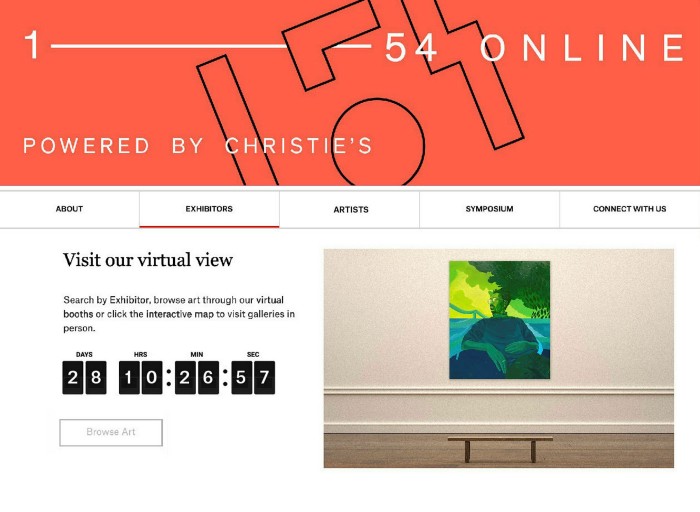The art world doubles up — online and for real

Roula Khalaf, Editor of the FT, selects her favourite stories in this weekly newsletter.
Despite the tightening Covid-19 restrictions in the UK, London’s galleries, museums and even its online-only fairs want us to enjoy art in person as much as possible in October. Like most large-scale events in 2020, the Frieze fairs — normally held in two vast tents in Regent’s Park at this time of the year — have gone virtual, with 250-plus exhibitors on frieze.com (October 9-16). But, says fair director Victoria Siddall, “There’s a real desire to get out and see art.”
“Hybrid” is the word of the month. Frieze itself isn’t totally digital — its Sculpture Park is happily back in Regent’s Park and organisers will host the Frieze Live performance programme in a temporary space on Cork Street (both from October 5). Siddall believes the fair also has a role to play in encouraging visitors to the many other real-life events taking place during the week. The VIP pages of Frieze’s website include an “In the City” section with listings of private views and museum shows, as well as promoting the 1-54 African Art Fair that fields 29 exhibitors in Somerset House from October 8-10.

Frieze’s online viewing room will also have a new tag, to mark out works that can be seen in physical gallery spaces — and London offers plenty. Stephen Ongpin Fine Art has works from his virtual Frieze Masters show hanging in his St James’s gallery (Drawn to Nature: Flora and Fauna from the 16th Century to the Present), while Kate MacGarry does the same for the Turner Prize winner Helen Cammock, who has works on MacGarry’s Frieze London virtual booth and a solo show in the Shoreditch gallery.

Josh Lilley has pieces by Kathleen Ryan, Tom Anholt and Derek Fordjour in his gallery’s private showroom as well as online for Frieze London. Lilley says the hybrid opportunity is particularly important for lesser-known artists and cites the ceramicist Rebecca Manson, who also shows in both realms. “You absolutely can’t replicate standing in front of art. We want curators and museum groups who are in town to be able to see works by artists they may not know in the flesh,” he says.
Artists too, while responding well to having so many exhibitions move online, generally make work to be experienced in real life. “For living artists to give new work for a virtual fair is very different to an exhibition or [physical] fair, and it’s a challenge,” says London gallerist Alison Jacques.

Lilley is among many gallerists who have decided to double down on square footage this month and has expanded next door, where he shows Nick Goss (October 8-November 13). Gallerist Stephen Friedman has taken a temporary space up the road to show his Frieze London and Masters booths. This new gallery backs on to Cork Street, where other October newcomers to the Pollen Estates buildings also include Sadie Coles HQ, Lisson Gallery and a new gallery, Saatchi Yates. Cromwell Place, a set of shared gallery buildings in South Kensington, has 40 incoming members, including Lehmann Maupin and Ingleby Gallery, and opens on October 10. “Galleries are quite a safe environment just now. There are never that many people at a time and it is all very controlled,” Lilley says.

Rome gallerist Lorcan O’Neill has also committed to a physical space at 14 Hay Hill in Mayfair until October 24, opening to coincide with his Frieze London digital presence.
Some gallerists have already tried out their Frieze booth physically. Lyndsey Ingram and Tristan Hoare joined forces for Frieze Masters to show works by the American postwar artist Ellsworth Kelly with Moon Jars by the contemporary Korean ceramicist Kim Yikyung, as well as other works. They had a soft launch in Hoare’s London gallery in September. “It gave us a chance to take photographs of the installation and make more engaging videos for the virtual fair,” Ingram says. It also gave them a sense of people’s appetite to go into the city. “We planned small dinners, for groups of six, and were worried as more restrictions came in. But everyone came. I think people were desperate to get out,” she says.

It all makes commercial sense too. While many galleries report sales made online during the pandemic, nothing can quite beat the speed of sealing a deal on site. “Longtime collectors have faith and we have made six-figure sales in the past few months. But certainly it is much easier when someone is standing in front of a work,” Friedman says. The unique nature of art and its relatively high price points rightly demand more physical interaction than other luxury goods. “You can buy a few pairs of trousers online, try them on and send them back. Art is not the same,” Siddall says.

Marwan Zakhem, the founder of Gallery 1957 in Ghana, says it’s about trying as many channels as possible, to see what works. So this week he has a group show of four artists online at 1-54 (viewable through Artsy and Christie’s), he is showing in the real-life fair in Somerset House and also opens a temporary space in London later in the month. This starts with a show of the Ghanaian artist Kwesi Botchway (1 Hyde Park Gate, October 23-December 13). “I’m used to the digital world and what it can do because most of our collector base is outside of Ghana. But without fairs, we had to think about how best to proceed physically,” Zakhem says.
There are concerns that despite so many efforts, the growing Covid-19 cases in the UK and much of Europe could dampen the mood, or even shut doors again. But most art dealers are looking on the bright side.


“We are small galleries, accepted into Frieze Masters for the first time and then so disappointed when it was cancelled,” Lyndsey Ingram says. “But you learn to create alternative opportunities and make the most of any situation — small galleries are also nimble.”
Stephen Friedman echoes the mood of the moment: “You have to get on with things. If you waited around for every aspect of this situation to resolve, you simply wouldn’t get out of bed in the morning,” he says.
Victoria Siddall, overseeing her second unexpectedly online event this year, is adamant that “Frieze Week goes on.”
frieze.com, 1-54.com

Comments